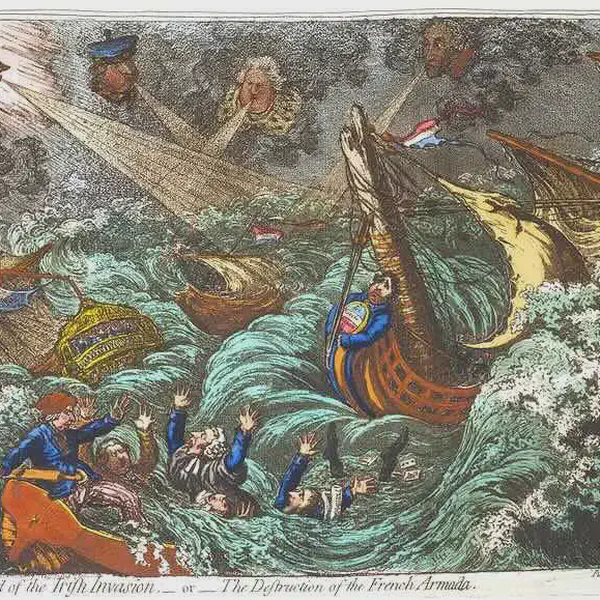
Death of Marie-Louise O’Murphy, Mistress of Louis XV, Dies in Paris
December 21, 1814
French attempt to send a fleet, under the command of General Lazare Hoche and including Theobald Wolfe Tone, to Ireland in support of the Irish Rebellion against British rule. Here is a more detailed explanation:
In December 1796, a French expedition set sail from Brest, France, with the aim of landing in Ireland. The fleet was part of a plan to support the Society of United Irishmen and their rebellion against British rule in Ireland. The fleet consisted of 43 vessels and carried approximately 14,500 men, including Wolfe Tone, who was a prominent Irish revolutionary.
However, the expedition faced adverse weather conditions. Storms scattered the fleet, and many of the ships were forced to return to France. The scattered nature of the fleet weakened the French effort, and the intended invasion of Ireland did not materialize as planned.
Wolfe Tone and the French forces attempted another expedition the following year, in 1798, but it also faced challenges and ultimately ended in failure. The French attempts to assist the Irish Rebellion were not successful, and the rebellion itself faced suppression by British forces.
This period marked a significant chapter in Irish history, with various attempts at rebellion and independence, but it was not until the early 20th century that Ireland achieved independence from British rule.
Expédition d’Irlande
The French expedition to Ireland, known in French as the Expédition d’Irlande (“Expedition to Ireland”), was an unsuccessful attempt by the French Republic to assist the outlawed Society of United Irishmen, a popular rebel Irish republican group, in their planned rebellion against British rule during the French Revolutionary Wars. The French intended to land a large expeditionary force in Ireland during the winter of 1796–1797 which would join with the United Irishmen and drive the British out of Ireland.
The French anticipated that this would be a major blow to British morale, prestige and military effectiveness, and was also intended to possibly be the first stage of an eventual invasion of Britain itself. To this end, the Directory gathered a force of approximately 15,000 soldiers at Brest under General Lazare Hoche during late 1796, in readiness for a major landing at Bantry Bay in December.